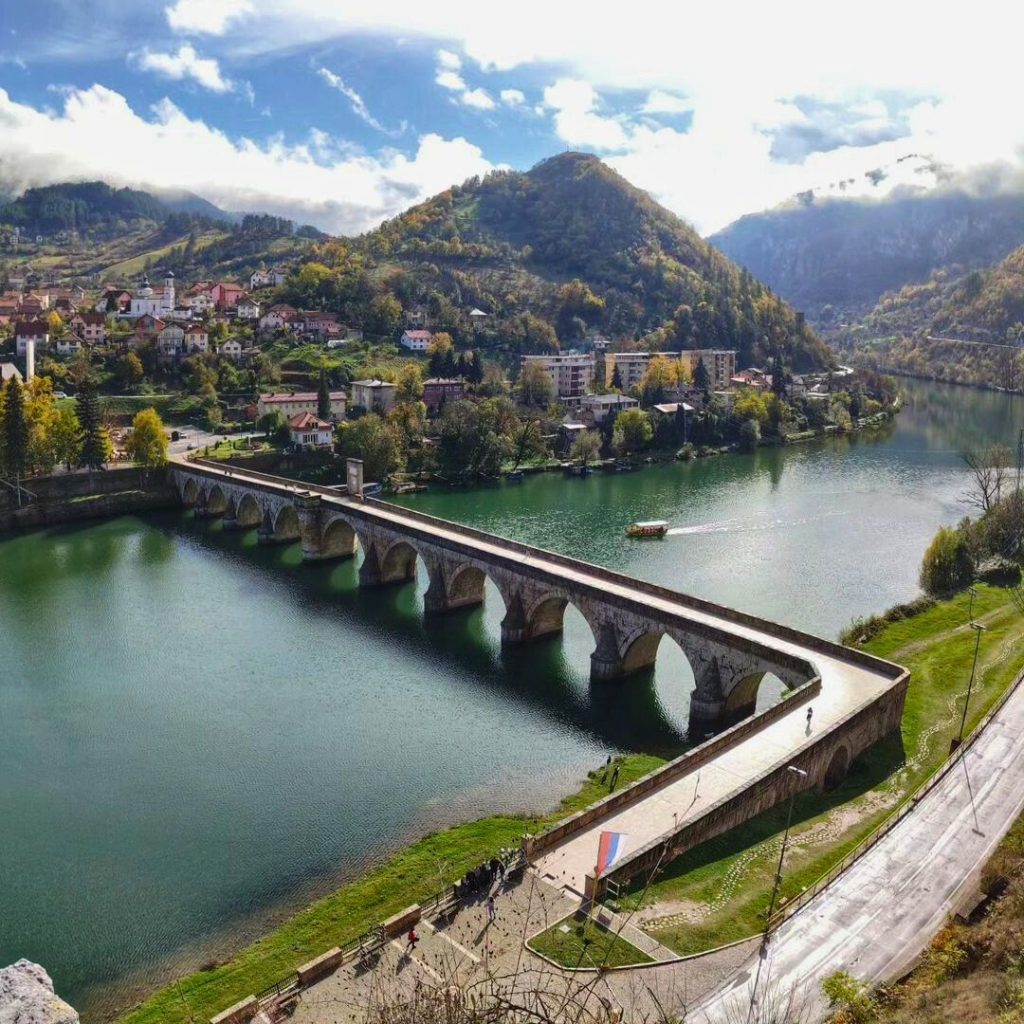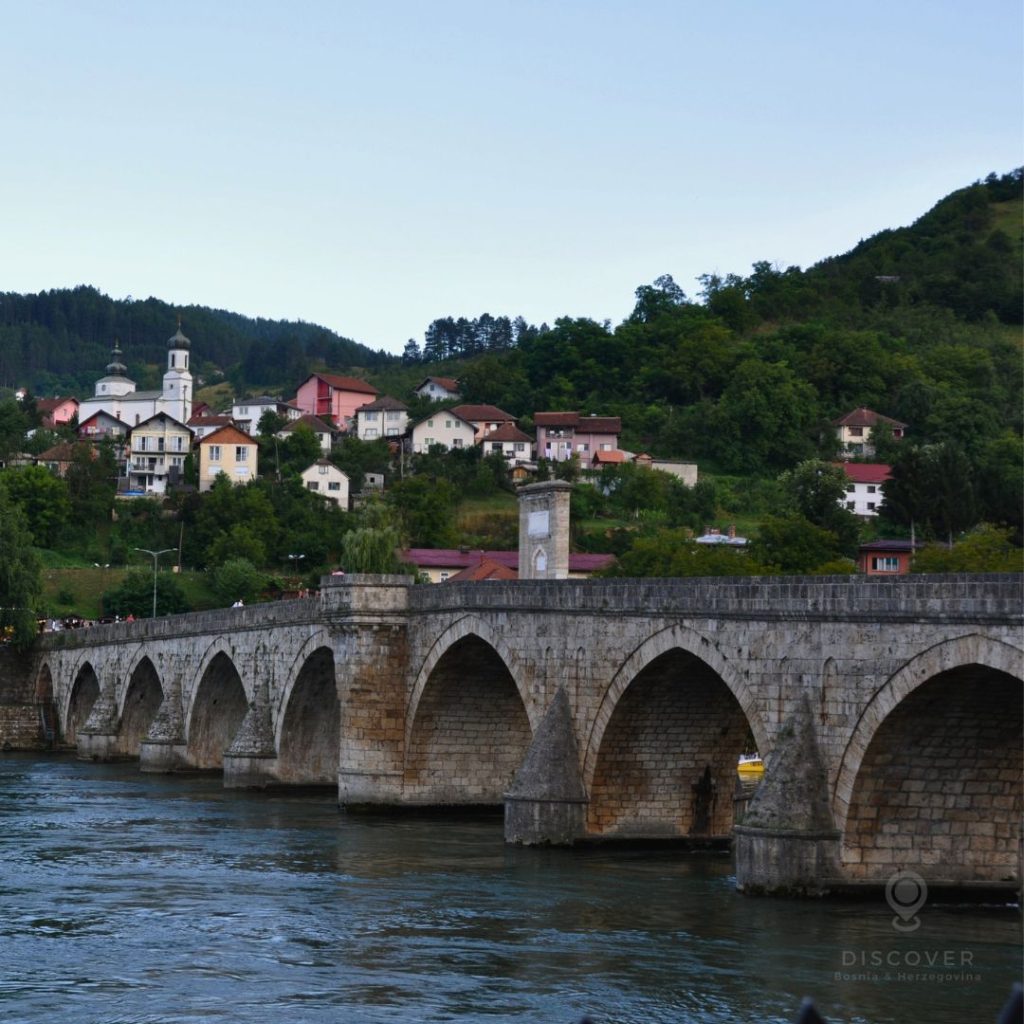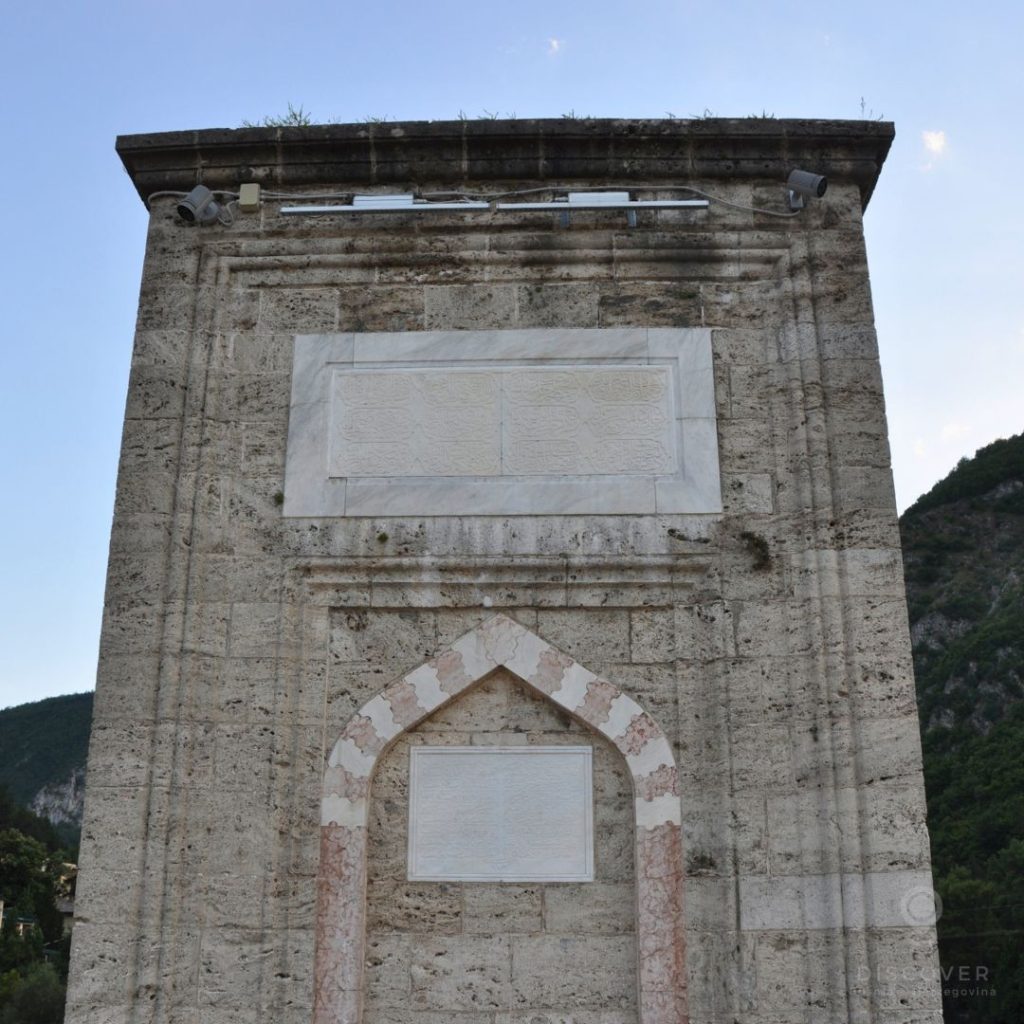
…Setting of “The Bridge on the Drina” by Nobel Laureate Ivo Andrić…
The Visegrad Bridge is a historic bridge located in the town of Visegrad in eastern Bosnia & Herzegovina. It was built during the Ottoman period in the mid-16th century and spans the Drina River, connecting the two banks of the river. The bridge was commissioned by the Ottoman Grand Vizier Mehmed Paša Sokolović, who was born in the nearby village of Sokolovići and is widely regarded as one of the most influential figures in Ottoman history.

The Visegrad Bridge, constructed by the renowned architect Kodža Mimar Sinan (April 15, 1489 – July 17, 1588), also known as the ‘Grand Architect Sinan,’ is hailed as a masterpiece of Ottoman architecture in the Balkans.

This UNESCO World Heritage Site, dating back to 2007, spans an impressive 179 meters in length and 6 meters in width, boasting 11 elegant arches.

Its iconic hump-backed design ingeniously accommodates boat passage beneath during periods of high water.

The bridge has played an important role in the history of the region, and has been the scene of several significant events, including the Battle of Visegrad in 1806 during the Serbian Uprising against the Ottomans, and the massacre of Bosniak civilians by Bosnian Serb forces during the Bosnian War in the 1990s.

Despite these tragic events, the Visegrad Bridge remains an iconic symbol of the town and its history, and continues to attract visitors from around the world.
the best spot for a panoramic view of the bridge


Inscription on the bridge

Mr. Mehmed Pasha, the Asaf of his time,
Whose esteemed persona brings glory to the world,
Spent his wealth in charitable endowments for the pleasure of God.
No one shall say that spending on endowments is wasteful.
During his lifetime, he expended gold and silver on endowments,
Aware that his deeds would be his finest legacy.
In Bosnia, on the Drina river, he built a grand bridge,
And created an array of arches upon that river.
On such a deep and powerful river,
Ancestors could not erect anything.
With the help of God, the founder, Mr. Mehmed Pasha,
Ensured that his name would be mentioned with respect and gratitude.
He erected a bridge that has no equal in the world.
Do not say that the wealth spent on such a noble endeavor is squandered.
I hope in the Almighty God that his founder,
Shall have days passing by happily, and never feel sorrow in life.
Nihadi, witnessing the completion of the bridge, proclaimed in his chronogram:
“May Allah bless this wonderful, magnificent, and most beautiful bridge!”
Year 979.




